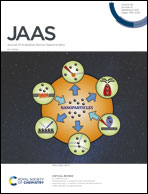Highly sensitive analysis of trace Pb in aqueous solution using electro-deposition and spark-discharge assisted laser-induced breakdown spectroscopy
Abstract
This study used laser-induced breakdown spectroscopy (LIBS) combined with spark discharge (SD) and an electro-deposition method to analyze trace heavy metal Pb in an aqueous solution. First, the electro-deposition method was used to enrich the trace heavy metal Pb element in an aqueous solution on the surface of a high-purity Al plate with an enrichment voltage of 8 V and an enrichment time of 10 min, thereby overcoming the problem of low sensitivity and accuracy in the direct detection of water samples by LIBS. Second, SD-LIBS was used to detect the Pb element on the surface of the Al plate to enhance the emission intensity of Pb(I). Finally, the calibration curves of Pb(I) at 405.78 nm were plotted for different discharge voltages (0, 2, and 4 kV), and it was found that at higher discharge voltage, the slope (S) of the calibration curve increased and the limit of detection (LOD) decreased. The S values were 0.0403 (0 kV), 0.1643 (2 kV), and 0.2853 (4 kV), and the LODs were 53.5 (0 kV), 13.1 (2 kV), and 7.5 (4 kV) ng mL−1. Therefore, the combination of the electro-deposition method and the SD-LIBS technique can realize higher sensitivity detection of trace heavy metals in aqueous solutions.



 Please wait while we load your content...
Please wait while we load your content...